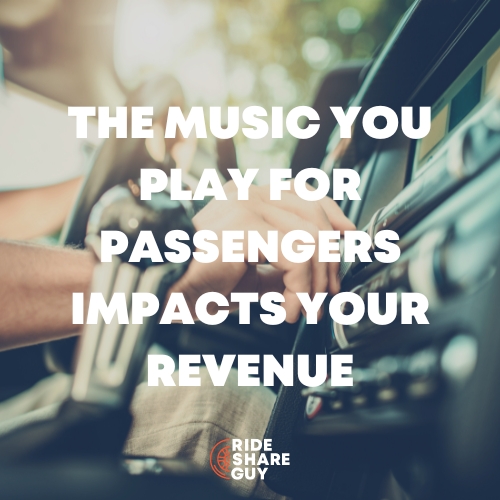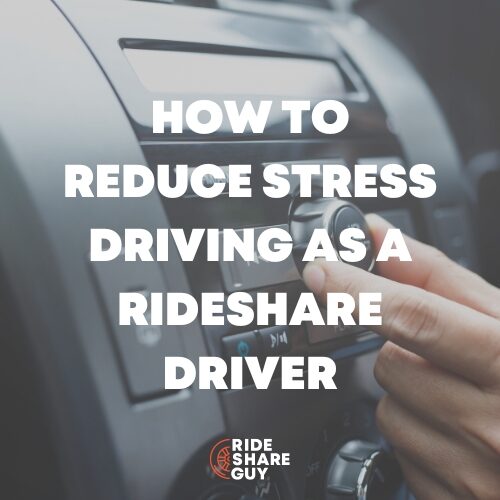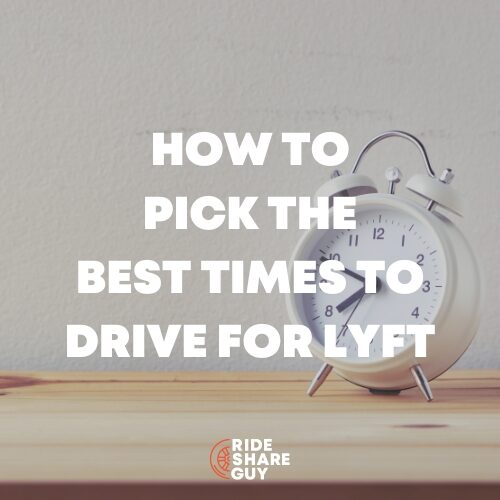In our second article on how to become a truck driver, RSG special contributor Jon Knope shares what life is like on the road as a truck driver and what you can expect from a truck driver salary. You can read Jon’s first article, How to Become a Truck Driver here.
In my last article on how to become a truck driver, I went over how to get a commercial driver’s license (CDL). As you might have gathered, trucking is a lot more demanding than rideshare. The inflexible multi-week shifts, electronic logging devices, and lengthy training time are understandably a big turn-off for a lot of folks. At the same time, a truck driver salary can be pretty lucrative, even from the beginning.
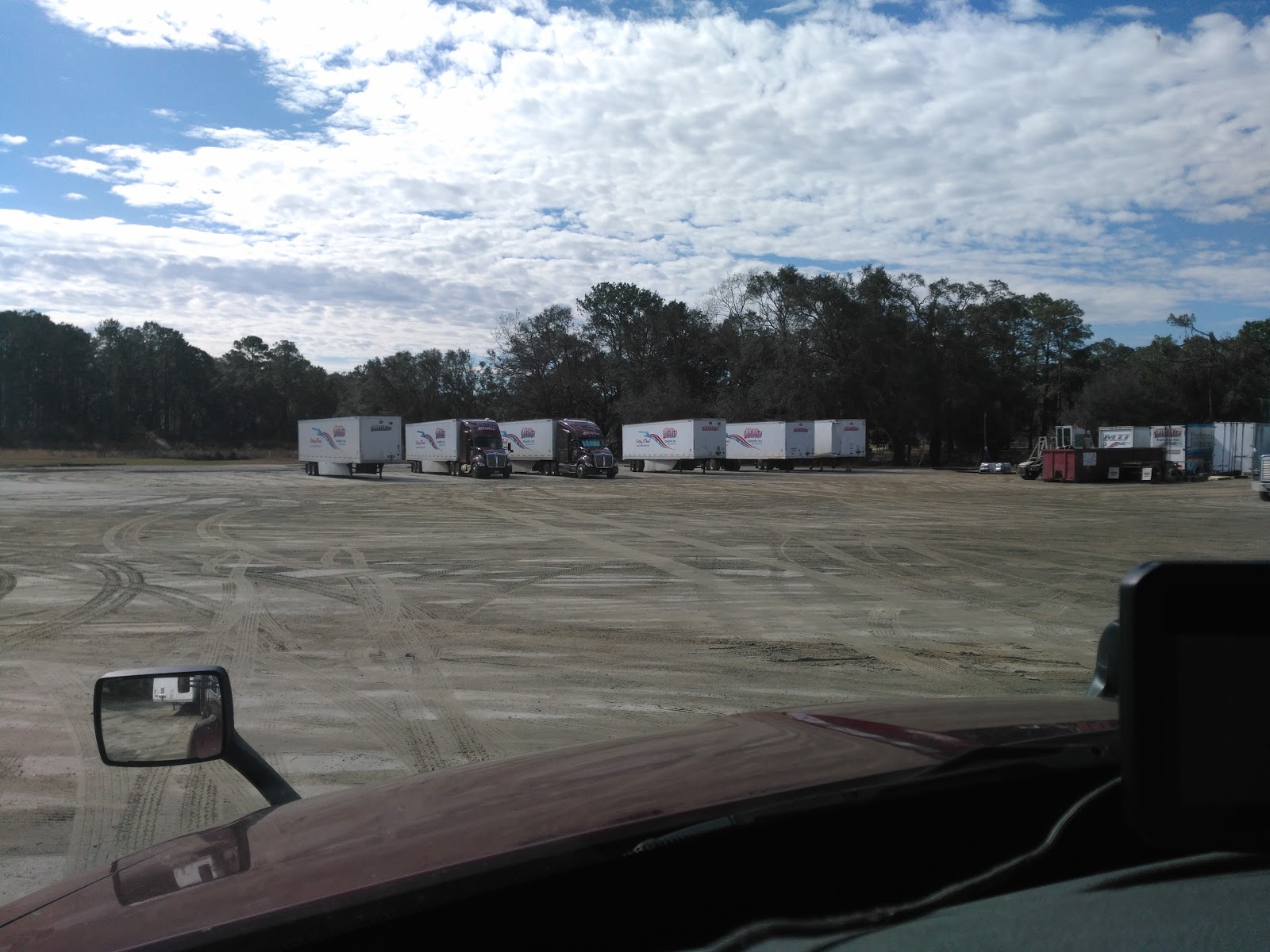
All those headaches don’t go unrewarded: Truck driver pay starts around $50k annually and averages around $70k, with specialty positions that top out over six figures. Trucking companies also offer employer-sponsored health coverage and the job comes with free housing, utilities included. Somewhat.
If you’re between jobs or between apartments – or if the thought of driving rideshare full-time while living out of your car has ever crossed your mind – take some time to consider truck driving.
The Road to a Truck Driver’s Salary
I sometimes joke that being an over-the-road (OTR) trucker is like being professionally homeless. While this does capture the overall vibe of sleeping in a vehicle and exclusively using public restrooms, it’s really not a fair comparison. Many modern trucks are equipped with TVs, mini-fridges, a diesel-powered furnace, and power inverters to run small appliances like laptops and microwaves. It’s like a super tiny apartment – minus the kitchen, sink, toilet, and shower.
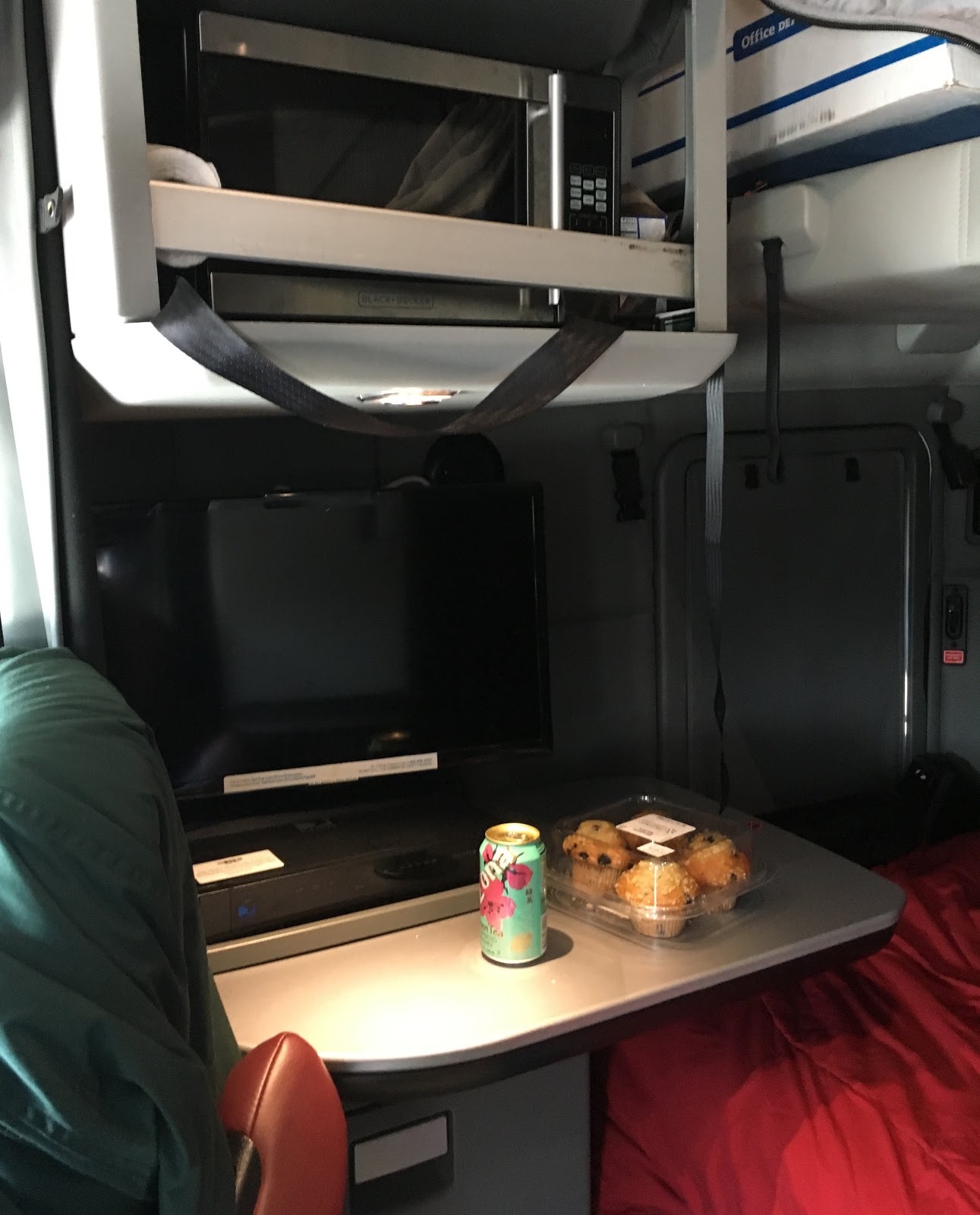
In your first year of trucking, you will likely spend 26+ days out of each month inside your assigned truck. This is not the only job format available: Regional jobs get you home every weekend, and local truck drivers go home every day. But the only way to get a local job is by paying your dues with at least a year or two of long hauls first. Personally, I’m still out here paying those dues, so that’s what I’m covering here. Eventually, you can increase your truck driver salary by driving more, getting additional certifications, and keeping a clean record.
How Much Can You Make As a Truck Driver?
Over-the-road (OTR) trucking jobs pay by the mile. When I started trucking last year, the rate was $0.42/mile, with an extra cent added each quarter for the first year – then 1c/year after that, with a cap of $0.58/mi. Recently my company increased starting pay to $0.43/mi, with an extra 1c, 2c, or 3c for the week if you crammed in 2,500, 2,700, or 3,000 miles.
To make everything even more opaque, trucking companies also offer two types of pay: straight pay and per diem (pictured below). On the per diem system, you’re still paid by the mile, but you get paid less. $0.35/mi in regular earnings, and $0.03/mi as “travel expense reimbursement.” The remaining $0.04/mi difference is (theoretically) made up with quarterly fuel bonuses, safety bonuses, and paid vacation time. The advantage to the per diem system is that you make less money on paper, and thus pay less taxes. Truck driver salary can be a little hard to understand at first, but you definitely get the hang of it!
As a former rideshare driver, I know these rates might sound appallingly low for the amount of effort and red tape involved – but truck miles are not like rideshare miles. Because I’m on the interstate 90% of the time, the miles fly by. My paycheck is usually around $1000 a week after taxes. That’s either really good, or really bad, depending on how you look at it.
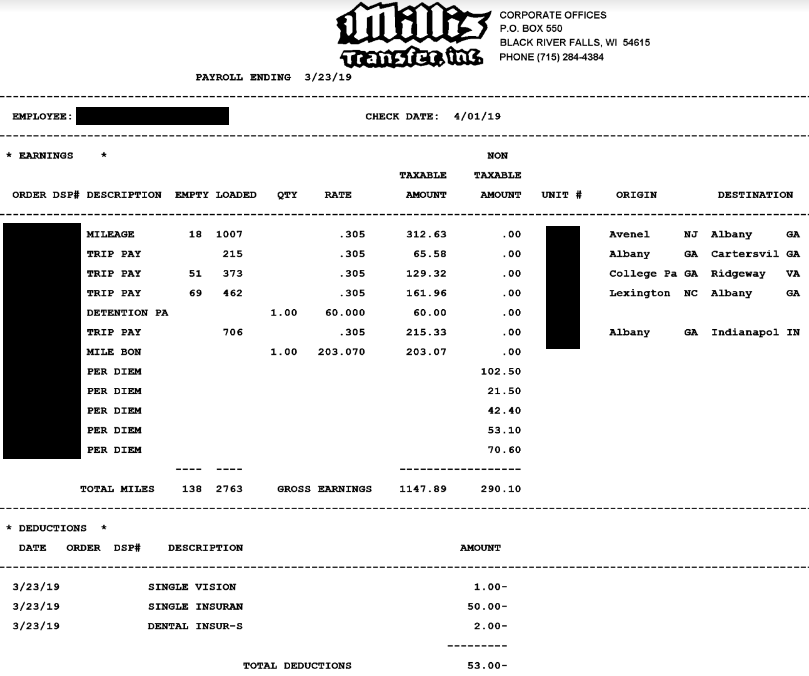
If you look at a week of trucking as 24 x 7 hours of work, that $1,000 is only $5.95 per hour. If you look at just interstate time, 65mph x $0.42 is $27.30 per hour. The most equitable calculation, in my opinion, is to calculate an average hourly rate based on an average of 70 hours worked – not just driving but waiting for loading and unloading, looking for trailers, fueling, etc. 1000 / 70 is $14.29 per hour – not great by any stretch, but it adds up fast when you’re putting in 70 hours every week.
A truck driver salary is not always consistent. When I take three days off for hometime, my paycheck is cut in half. Sometimes, freight is slow, and you’ll get stuck with short runs. But there are other weeks where you miss all the traffic, freight is plentiful, and your paycheck is $1350. It all depends on what company you work for, which dispatcher you get, where you’re going, who’s driving the forklifts that day, the weather, the traffic, the condition of all 18 tires, your energy level, and whether Mercury is in retrograde.
If you’re trying to compare different companies to find the best rates – good luck. Between variable bonus programs, the efficiency of shippers and receivers they work with, and the number of miles they have, trying to compare companies is apples and oranges. To make matters worse, recruiters often lie through their teeth to get you in the door. Don’t believe everything they tell you – find out what real drivers think. You can find trucking company reviews on websites like Indeed and Glassdoor, or on forums like The Trucker Report, Trucking Truth, and r/truckers.
One of the most overlooked aspects of trucking pay is expenses – specifically, there aren’t any (apart from food, data, Netflix, and some basic equipment, like work gloves and a good coat). This is especially true if you can spend your hometime with friends and family (or just skip it altogether) and ditch your rent bill. I figure non-participation in the increasingly exorbitant metro Atlanta housing market is saving me something like ten grand a year. Take that, debt.
Company Drivers vs. Owner-Operators
One final note on pay: There’s a big difference between being a company driver and an owner-operator. I’m a company driver, so the truck isn’t mine, and I don’t pay for it – I just drive it. Owner-operators do own the truck, and the insurance policy, and the maintenance costs – and they get paid a lot more, too. Usually over a dollar per mile. They also get to have some say over when, where, and how they drive.
The catch is the high cost of commercial insurance – not to mention the trucks. New tractors can cost over $150k, and from my (admittedly limited) research, those under $50k usually have around half a million miles on them – which from a maintenance perspective seems less than ideal. Many companies offer leasing programs to ease the cost of getting started, but it’s still a big commitment. Most new truckers start out with a company truck instead. Keep in mind that which company you choose to drive for can impact your truck driver salary – it may be worth it to drive for a company first before being an owner-operator.
Life on the Road
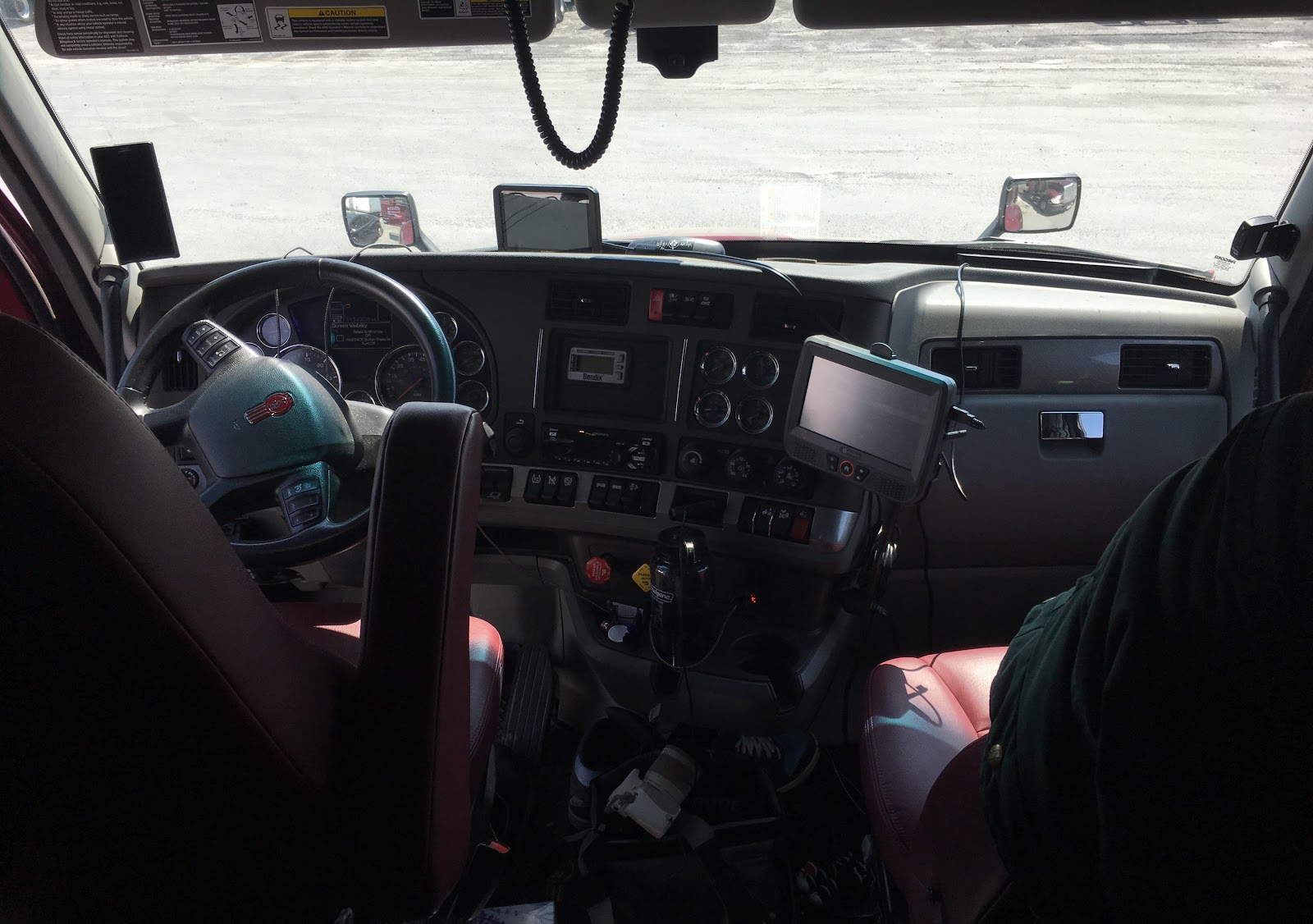
Driving
…and driving, and driving, and driving. If you’ve ever taken a long road trip where you drove 10 hours in a single day, that’s exactly what trucking is like, except every day. There’s one other big difference too: Your truck will be programmed to top out at a set speed, usually between 62 and 70mph. Companies use your truck’s speed regulator as a carrot and stick, letting you drive faster if you’ve been on your best behavior, and turning your speed down when you get tickets or break things.
The average OTR load assignment at my company, Millis Transfer, is around 600 miles. That means you’ll usually only have to stop at one or two customers per day. There are two kinds: Live loads, and drop and hooks. Live loads involve backing the trailer up to a dock door, and then a forklift driver loads and/or unloads the truck while you wait.
Drop and hooks are when you arrive at a shipper with an empty trailer, drop it off, and hook up to a preloaded trailer – or deliver a loaded one and grab an empty. Drop and hooks are preferable because they allow you to get through the stop faster and keep earning.
Parking
Finding somewhere to stop is one of the biggest challenges a trucker faces these days. There’s currently a major truck parking shortage. Hit an interstate around midnight, and you’ll find dozens of trucks stacked up on the off-ramps and on-ramps. The severity of the problem varies depending on where you are. I haven’t trucked on the West coast, but I have heard rumors that California contains almost no truck parking. Parts of the Northeast, especially around NYC, are similar. Trips to such parking deserts must be carefully planned in order to avoid getting woken up and ticketed for parking illegally.
There are a few types of parking spots: there are chain truck stops, mom and pop truck stops, rest areas, weigh stations, and your company’s truck terminals (if applicable). Some big stores like Walmart and Lowe’s also allow overnight truck parking, especially those in more rural areas.
Chain truck stops fill up the fastest. After dark, you probably won’t find a spot, unless you get lucky, or pay about $15 to rent a Reserved Spot for the night. Independent truck stops usually have spots open a little later, and rest areas and weigh stations are your best bet for late night parking. If your company owns a facility nearby, then that’s always an option, too. (My current company has eight terminals where drivers can park, shower, etc). If you want to keep all your options open, it’s best to start the day around 3 AM so you can get parked by mid-afternoon. There’s also an app called Trucker Path which lets you view and submit parking status reports for most truck stops.
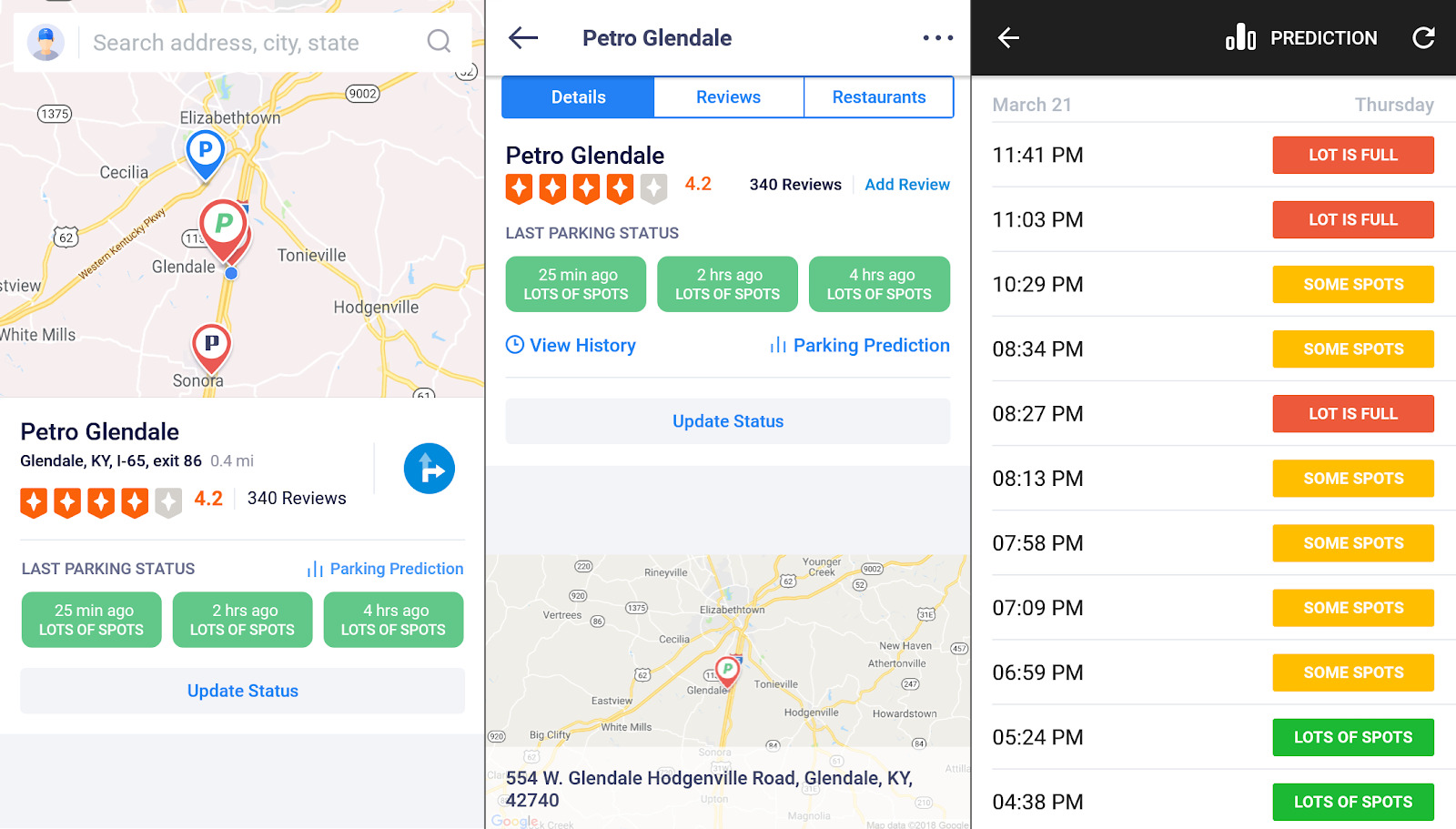
Eating
It’s amazing what you can do with a microwave these days. Despite my lack of a full kitchen, I rarely pay truck stop premiums for fast food. In the interest of full disclosure, my early days of trucking did add many fast food charges to my monthly credit card statements… and more than a few pounds to my gut.
Recently, however, my preferred strategy is to cram the truck into a supermarket parking lot once every week or so, and then cram my tiny fridge full of prepackaged salads, frozen burritos, shredded cheese, hot dogs, chocolate milk, and other essentials. If you’re feeling fancy, you can bring small appliances like blenders, slow cookers, or even a grill.
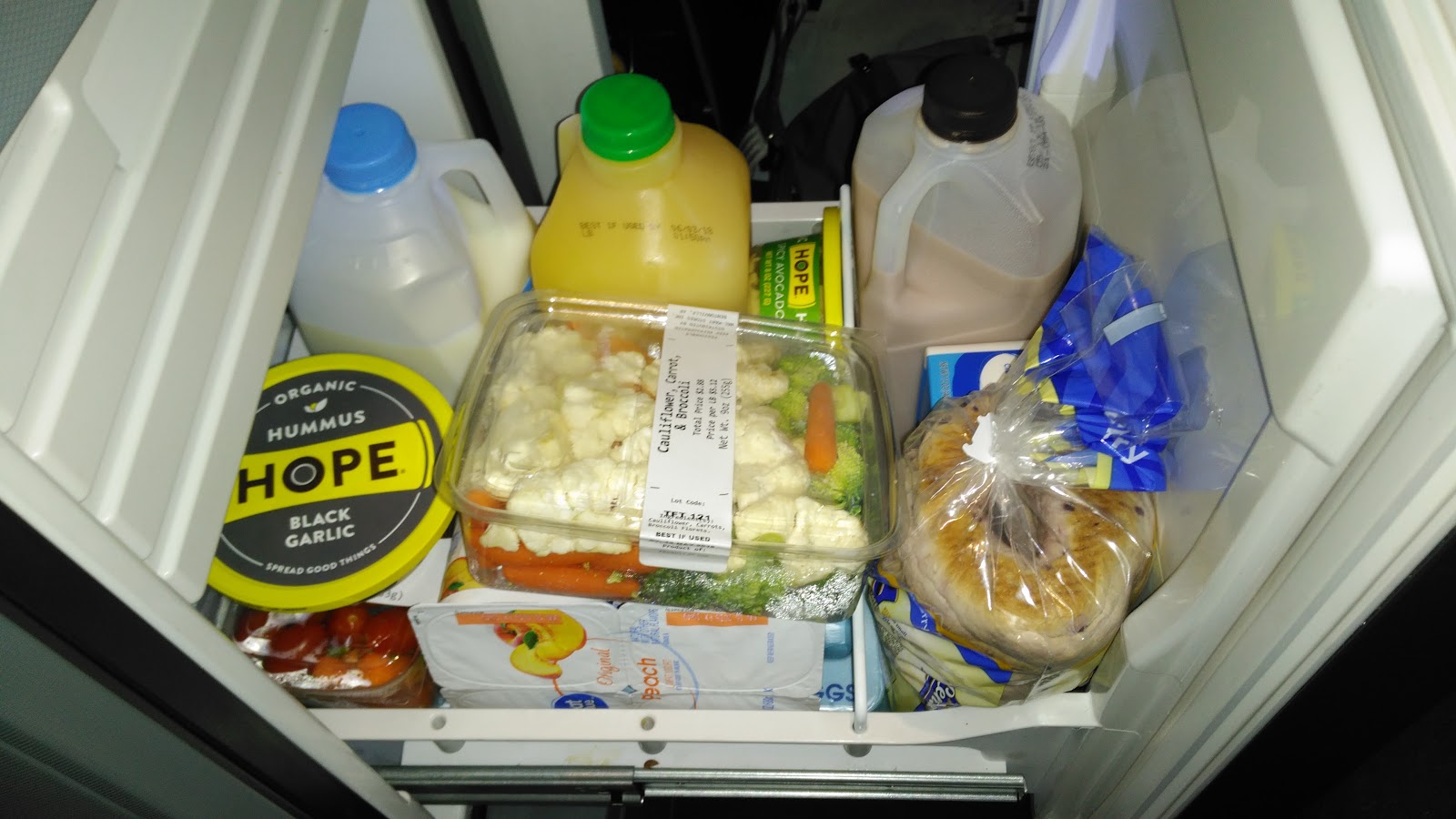
Bathing
Truck stop chains almost always have a handful of private showers, and although they cost around $12 for the general showering public, truckers rarely pay. When you purchase more than 50 gallons of diesel fuel in a single transaction at a truck stop with your company fuel card, you receive a Shower Credit loaded onto your personal rewards card. Since the truck holds 200 gallons and gets about 6.5 mpg, shower credits aren’t too hard to come by.
There are three major players in the truck stop game: Pilot/Flying J, TA/Petro, and Love’s. When you fill up at a Pilot, for example, your shower credit can be redeemed at any other Pilot or Flying J location within 10 days. The same goes for the other two chains.
I know the words “truck stop shower” probably conjure up a certain kind of image, but in reality, a lot of them are cleaner than showers I’ve had in apartments. The workers clean them after every use, and they even include freshly laundered towels. Don’t get me wrong – some showers are better than others, and I always wear flip flops, regardless of how clean it looks. But on the whole, they’re pretty tolerable, and they usually have unlimited hot water, too.
Browsing
Although Internet access is not included, it is not totally absent, either. The major truck stops claim to offer WiFi, although in the rare cases when the signal actually reaches from the store to your truck, it’s painfully slow.
The preferred strategy is to obtain a 4G mobile hotspot, or a cell plan with unlimited data and tethering. Latency on these types of connections may be frustrating for the avid MOBA player, but my download speed through Sprint is usually about 10mbps – not super fast, but adequate for browsing, streaming, Skype, and Civilization VI. Despite my best efforts, there are usually two or three nights per month when I find myself parked far away from the interstate with no Sprint service. For these occasions, I recommend the Nintendo Switch.

Sleeping
If listening to your trainer snoring for the first six weeks of your trucking career failed to teach you to the subtle art of Sleeping in Noisy Environments, then reefers certainly will. A reefer is trucker slang for a trailer equipped with a diesel-powered refrigerator attached to the nose. This keeps perishables cold during transit – and in order to do so, it periodically makes about one lawnmower worth of noise. Drivers who pull reefer trailers love to park them three feet away from your head while you’re trying to sleep.
The other major obstacle is heat. Although my current truck is equipped with a diesel-powered furnace that can heat the truck with the engine off, it is not equipped with an APU (Auxiliary Power Unit). That means if I want air conditioning, I have to idle the truck. And when the truck is idling, the truck is vibrating – not ideal when trying to fall asleep. Some companies also place limits on your idle time and implement penalties for exceeding them. Further, idling is illegal in a growing number of states like NY, so if you wind up there in July without an APU and you want to stay legal, just be prepared to die of heat stroke.
Scheduling
Sometimes, a shipper or receiver will give you an appointment time, others let you arrive within a given window, and some operate 24/7. Depending on where you’re going, and what your dispatcher has in mind for your next trip, you are able to exert some control over your schedule.
For example, let’s say it’s 5am Monday. if I have an appointment time of 5am Tuesday, and I’m 10 hours away, I could either drive all 10 hours on Monday and park across the street while I wait for my delivery time, or I could drive 8 hours on Monday and another 2 on Tuesday – as long as I get there on time. In practice, however, it’s rarely that simple: Truckers also have to contend with the DOT’s convoluted driving time limits. All of this factors in to truck driver pay, so it’s crucial you pay attention to their time limits!
Hours of Service
The time you spend driving is tracked by an electronic logging device, viewable by your company and accessible by law enforcement during routine inspections. In addition to drive time, which is automatically tracked, you must also log the rest of your time as either “On Duty” (performing a non-driving work task, such as obtaining paperwork, or adjusting your tandems), “Off Duty” (out of the truck, not working) and “Sleeper Berth” (in the truck, not working). There are four separate driving limits which must all be obeyed:
- No more than 8 hours of continuous driving (a 30 minute break resets this limit)
- No more than 11 hours of driving per day (a 10 hour break resets this limit)
- No more than 14 hours of on duty time per day, including driving (a 10 hour break resets this limit)
- No more than 70 hours of on duty time, including driving, in the previous 8 days (a 34 hour break resets this limit)
It’s the last limit which is the most confusing. There are two ways to work within the limit. Some drivers run as much as they can each day for 6 days, racking up approximately 70 hours, and then take a 34 hour break on day 7 to reset the 70-hour clock. Other drivers “run on recaps.” With this method, a driver works an average of 8.5 hours every day, and never has to take a 34 hour break, because the 8 day period advances each day at midnight, and your time from 9 days ago no longer counts. This means the driver always has a day’s worth of time remaining on their 70 hour limit.
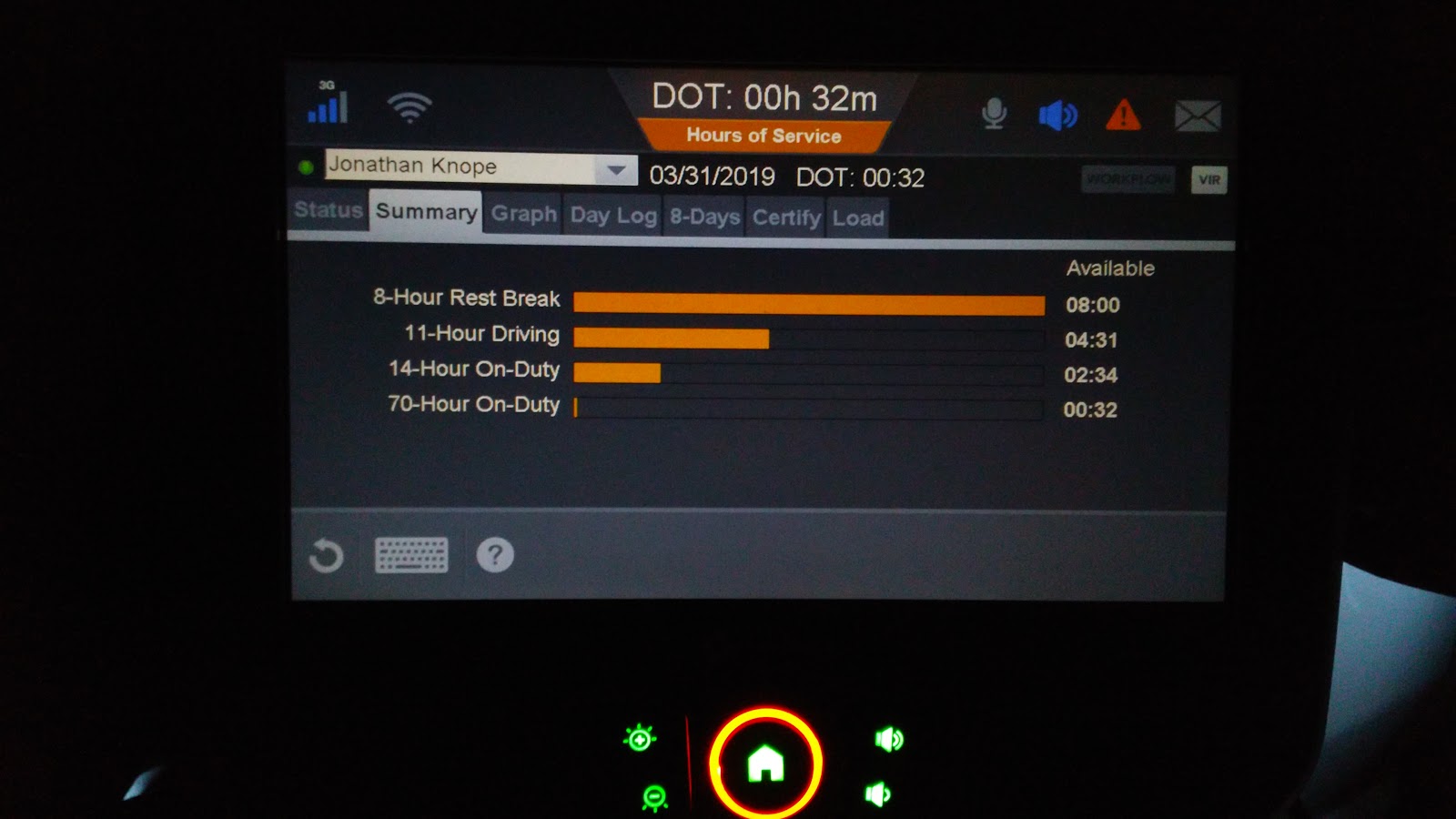
If you’re thinking, “Wow, this is confusing,” you would be correct. At least a third of my company’s training time was spent trying to explain this wacky set of rules. Unfortunately the laws have very little to do with actually getting quality rest. Although I usually manage to keep my alarm clock within the same two or three hour window, there are times when the combination of laws, appointment times, and time zones call for me to start work at midnight one day and noon the next. Truckers drink a lot of coffee.
Other Trucking Tasks
Unfortunately, it’s not all cruising down the interstate, listening to your favorite podcasts and eating snacks. More than 90% of it is – but not all of it. The other 10% is where things get tricky.
Gears
I have an automatic truck (and an automatics-only restriction on my license), so I haven’t faced this particular challenge in earnest. However, most trucks still use manual transmissions with anywhere from 6 to 18 speeds. I’m told that manual truck transmissions don’t operate in the same way as manual cars, either, so it will definitely take practice.
Backing
Going forwards is pretty easy, but going backwards is one of the most difficult aspects of trucking when you’re starting out. You’ll have to back into parking spots to sleep, disconnect and reconnect to different trailers, and line up with dock doors for loading and unloading. It took me months to get comfortable with backing up.
Axle Weights
You’ve probably seen weigh stations before on the highway. When you’re driving a truck, you’ll have to visit those – and if they find too much weight on any one axle, you’ll get a fine. Most shippers are good about keeping you under the gross weight limit of 80,000 lbs, but they may not distribute the load correctly.
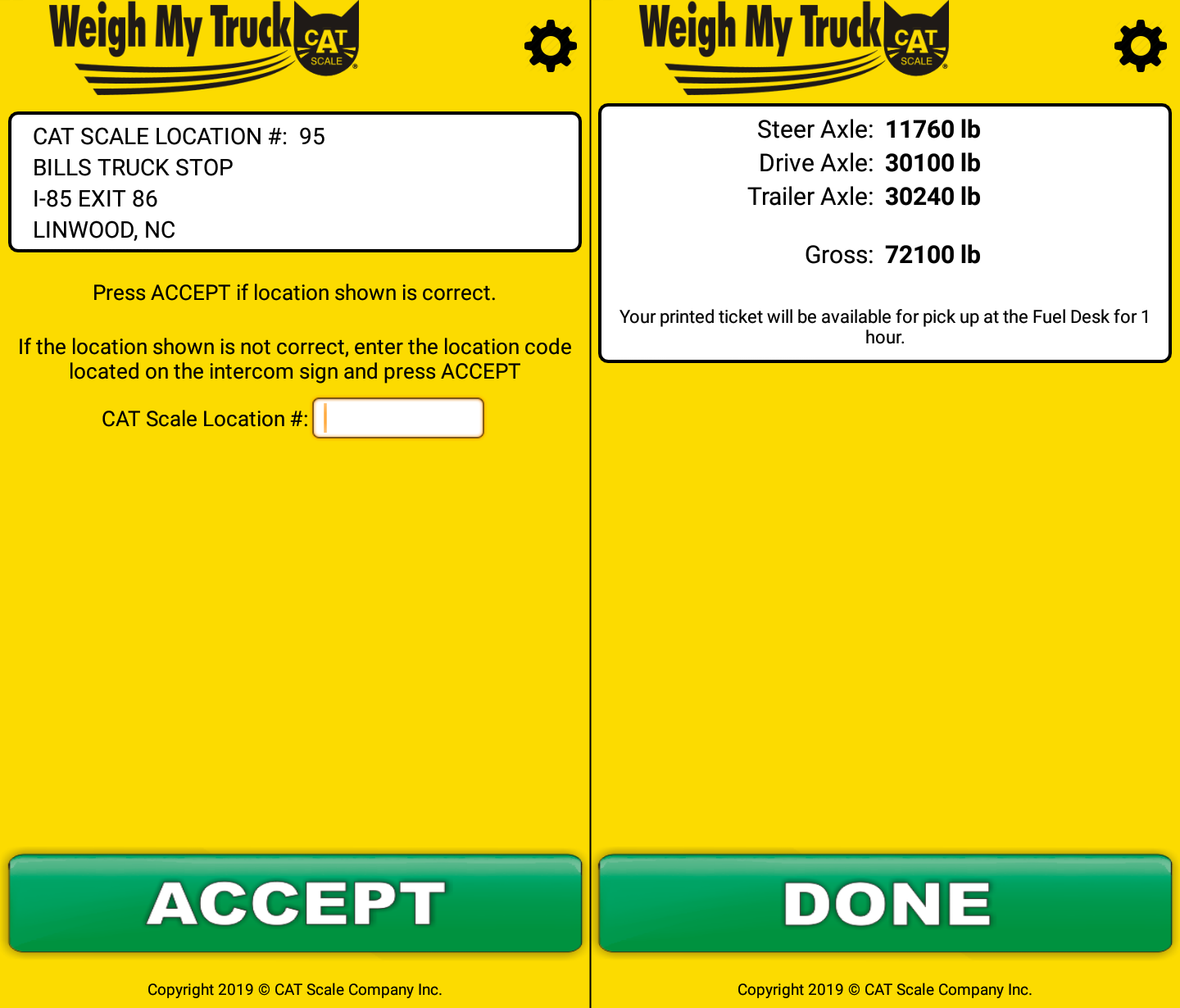
You can adjust how the weight is distributed by changing where the rear wheels (called “tandems”) are positioned underneath the trailer. Pulling a lever unlocks a set of pins, allowing you to set the trailer brakes and push the trailer forwards or backwards over the stationary wheels. You can check your work by visiting a CAT scale at the closest truck stop. They even have an app which lets you see your axle weights without going inside for a paper copy.
DOT Inspections
You know the fourth amendment – the one where it’s against the law for cops to search your stuff without due cause? It doesn’t apply to truckers. The DOT gives themselves the right to pull you over and toss your entire truck at will. They don’t do that very often, but when they do it’s a big hassle. You’d better be extra friendly to the officer, too. They can fine you and put points on your license for just about anything, from a burnt-out clearance light to a missing rivet.
Trip Planning
The truck cannot be driven on all roads, so you’ll need to figure out where you’re going to drive before you start driving. Most truckers use a standalone GPS device. The two major players are Rand McNally and Garmin. The tl;dr is that the Rand-McNally devices give better directions but fall apart, whereas Garmin devices are more durable, but make terrible routing choices. There are also truck GPS apps available for your phone, and there’s a GPS system baked into most Qualcomm tablets too if you’d rather not buy anything.
Seasoned truckers will tell you that the best way to avoid getting surprised by a low clearance sign or a 15-ton weight limit is to consult the most recent edition of the Rand McNally Motor Carrier Road Atlas. If you’re leaving the interstate to go somewhere that you’ve never been before, this is definitely the best choice, as I learned during a harrowing encounter with a 12’ 10” clearance sign in my first week solo (the truck is 13’ 6”). As you learn how to get to locations that your company frequents, you’ll need to consult the atlas less often.
Big Brother
For rideshare drivers, I can’t recommend two-way dashcams enough. As a trucker, though, my relationship with dashcams has changed somewhat. The cameras that came with my truck are bristling with “features,” and I loathe all of them.
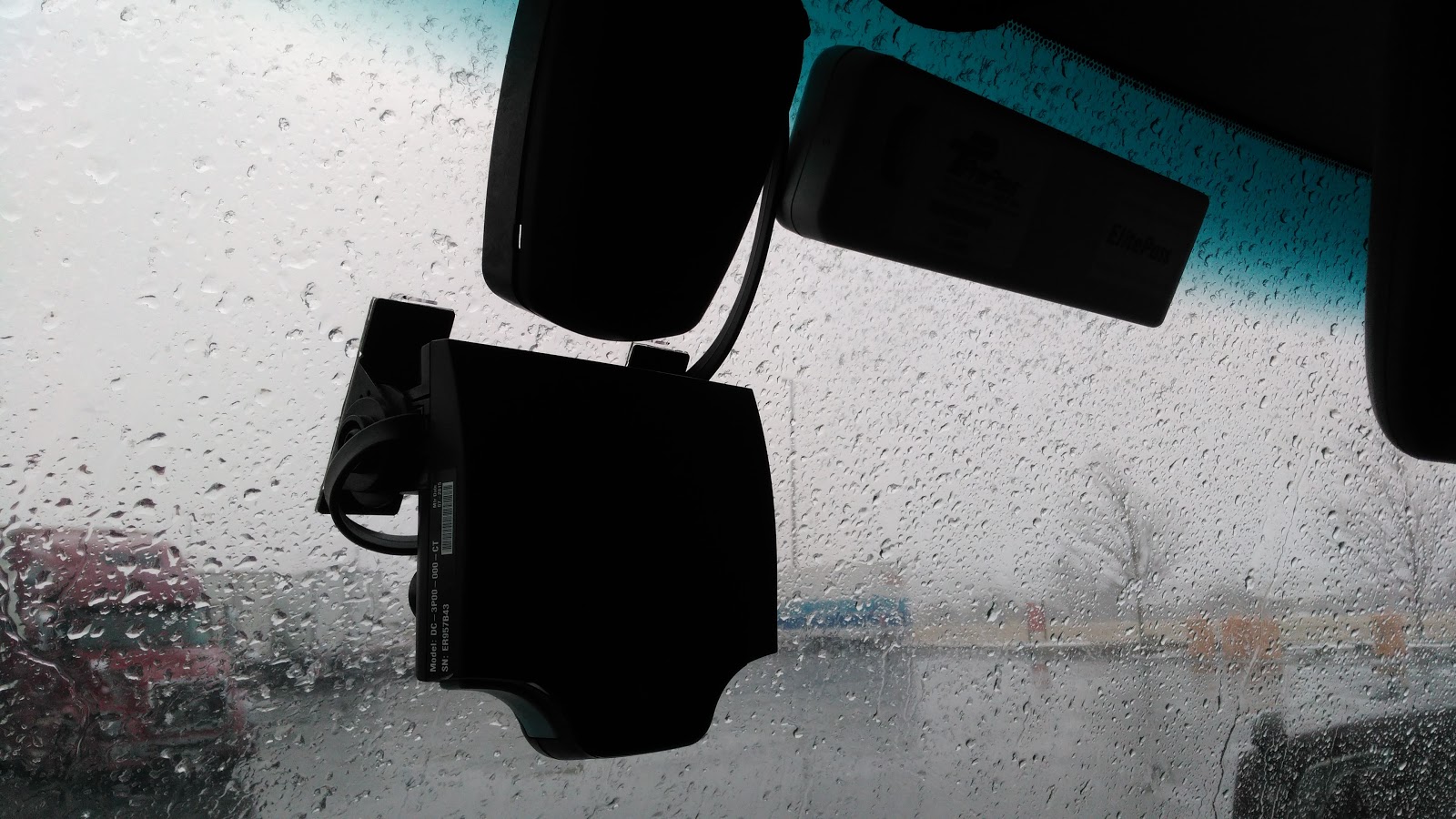
The following distance feature does exactly what its name suggests. When following too closely, the dashcam automatically saves a video clip – both of the road and of yours truly inside the cab. The clip is then uploaded and reviewed by an evaluator. If the video shows a cell phone, the consequences are dire. My company has a two strike policy for using handheld devices. Get caught once, and they’ll turn your speed governor down to 62mph. Get caught a second time, and you’re fired. As you can imagine, texting while driving is a big deal when you weigh 40 tons and it takes ¼ mile to stop.
The lane sensor does what its name suggests and more. It goes off without fail every time the tires brush a lane line – but it also seems to go off at random with utter abandon. Just like with the following distance sensor, the camera saves and uploads a clip to the cloud every time.
Modern truck dashcams can also read speed limit signs and even track your eye movement. Living and working under constant surveillance is very uncomfortable at first. After a year… it is still very uncomfortable. I can understand why companies want to make sure their $200,000+ of equipment is in good hands, but the endless beeping and Orwellian recording light continue to take their toll on my psyche. In my opinion, this is one of the worst parts of the job.
Career Prospects and Increasing Your Truck Driver Salary
The good news is that commercial self-driving tech seems to be perpetually 10 years away, and I don’t think there’s any risk of trucking jobs becoming fully automated any time soon. The other good news is that by adding more notches on your trucking belt, you can drastically increase your earnings. Feeling lucky? Hop into the driver seat of a gasoline or propane tanker, and get handsomely rewarded for your bravery. Not worried about the groundwater supply? Head to the oilfields of Texas and haul frac sand. Got rich friends? Make bank hauling exotic cars or priceless art objects. Your CDL can even open doors to other industries that aren’t driving-focused, such as operating heavy construction equipment. All of this will help to increase your truck driver salary!
Even if you want to keep it simple and stick with pulling regular old trailers (“dry vans”), gaining experience and keeping your nose clean can really pay off. Walmart’s trucker fleet is among the highest paid in the country, with average salaries of nearly $90,000 – but they require 30 months of experience before they’ll even consider you.
Trucking is a big job with big tradeoffs. It’s a far cry from driving rideshare in the big city, but it’s been a pretty good fit for me so far – and I hope this article has helped you decide whether it might be a good fit for you, too. Be safe out there!
Readers, what questions do you have about trucking life? Let us know in the comments.
You can also keep up with Jon over at www.truckingseriously.com
-Jon @ RSG
